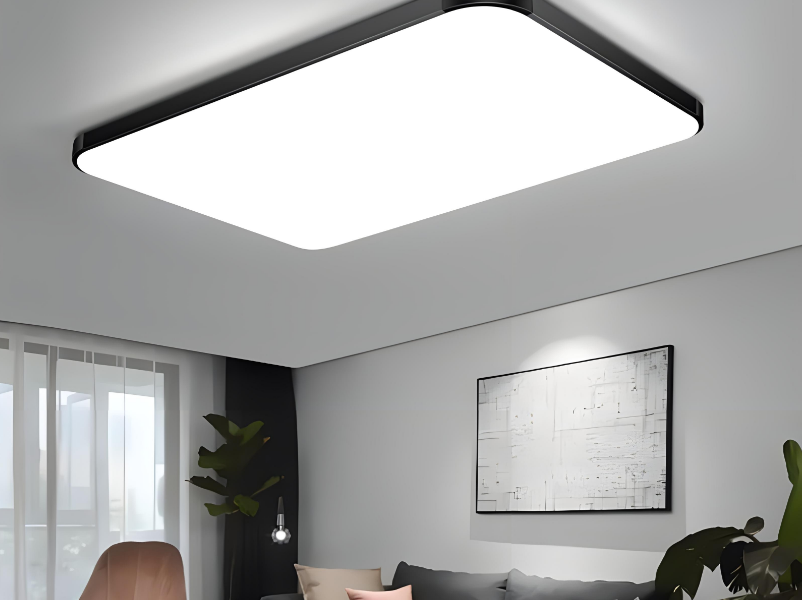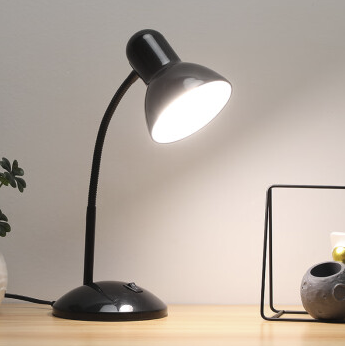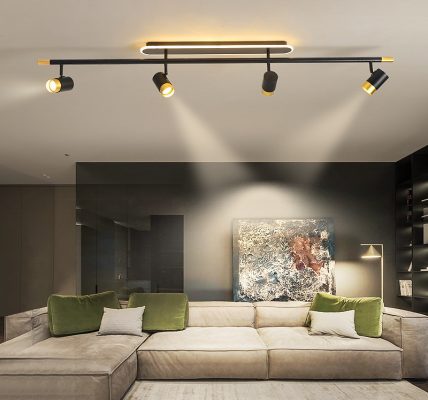When it comes to interior design, lighting plays a crucial role in creating the overall look and feel of a space. It has the power to transform a room, enhance its features, and set the mood. One of the key elements of lighting design is the ceiling lamp. Ceiling lamps not only provide illumination but also serve as a statement piece that can elevate the style and aesthetics of any room.
The impact of ceiling lamps on the overall look and feel of a space cannot be underestimated. They can add drama, create focal points, and enhance the architectural features of a room. Whether you are designing a living room, bedroom, kitchen, or office space, choosing the right ceiling lamp is essential to achieve the desired ambiance and functionality.
Understanding the Different Types of Ceiling Lamps Available
When it comes to ceiling lamps, there are several types to choose from. Understanding the differences between these types will help you make an informed decision based on your needs and preferences.
Flush mount ceiling lamps are mounted directly against the ceiling, providing a seamless and clean look. They are ideal for rooms with low ceilings or limited space. Semi-flush mount ceiling lamps hang slightly below the ceiling and are suitable for rooms with higher ceilings.
Pendant lamps are suspended from the ceiling by a cord or chain, creating a focal point in the room. They come in various styles and designs, making them versatile for different spaces.
Chandeliers are grand and elegant ceiling lamps that often feature multiple arms or tiers with decorative elements such as crystals or glass shades. They are commonly used in dining rooms or entryways to make a statement.
Track lighting consists of multiple adjustable light fixtures mounted on a track. It is ideal for highlighting specific areas or objects in a room.
Recessed lighting is installed into the ceiling, providing a sleek and minimalist look. It is commonly used for general lighting or to highlight specific areas.
Factors to Consider When Choosing a Ceiling Lamp
When choosing a ceiling lamp vertigolamp , there are several factors to consider to ensure that it suits your space and meets your needs.
Firstly, consider the size of the room and the height of the ceiling. A small room with a low ceiling may require a flush mount or semi-flush mount lamp, while a larger room with a higher ceiling can accommodate a pendant lamp or chandelier.
Secondly, consider the purpose of the room. Different rooms have different lighting requirements. For example, a kitchen may require bright and task-oriented lighting, while a bedroom may benefit from softer and more ambient lighting.
Personal style and preferences also play a significant role in choosing a ceiling lamp. Consider the overall decor and theme of the room and choose a lamp that complements it. Whether you prefer modern, traditional, or eclectic styles, there is a wide range of options available to suit your taste.
Lastly, consider your budget. Ceiling lamps come in various price ranges, so it is important to set a budget and stick to it. Remember that investing in a high-quality lamp can provide long-term benefits in terms of durability and performance.
How to Determine the Right Size and Height for Your Ceiling Lamp
Choosing the right size and height for your ceiling lamp is crucial to ensure that it fits proportionally in the room and provides adequate lighting.
When it comes to size, there are general guidelines you can follow. For example, in dining rooms, the diameter of the chandelier should be approximately one-half to two-thirds the width of the table. In bedrooms, the size of the pendant lamp or chandelier should be proportionate to the size of the bed.
The height of the ceiling lamp is also important. In rooms with standard 8-foot ceilings, the bottom of the chandelier or pendant lamp should be at least 30 inches above the table or countertop. For rooms with higher ceilings, you can adjust the height accordingly.
It is important to note that these are general guidelines, and personal preferences and the specific layout of the room may require adjustments. It is always a good idea to consult with a lighting professional or interior designer for expert advice.
Tips for Choosing the Right Style and Design for Your Space
Choosing the right style and design for your ceiling lamp is essential to create a cohesive and visually appealing space.
One approach is to match the lamp to the room’s decor. If you have a modern and minimalist room, choose a sleek and simple ceiling lamp that complements the clean lines and neutral color palette. For a traditional or vintage-inspired room, opt for a chandelier or pendant lamp with ornate details and warm finishes.
Another approach is to mix and match different styles. This can create an eclectic and unique look that adds character to the space. For example, you can pair a modern pendant lamp with a vintage-inspired chandelier for an unexpected twist.
If you want to make a statement, choose a ceiling lamp that stands out and becomes the focal point of the room. This can be a chandelier with intricate details or a pendant lamp with a bold color or unique shape. Just make sure that it complements the overall style of the room and does not overpower other elements.
The Importance of Lighting Temperature and Color in Interior Design

When it comes to lighting, temperature and color play a significant role in creating the desired ambiance and mood in a space.
Lighting temperature refers to the perceived warmth or coolness of light. Warm lighting has a yellowish or orange hue, while cool lighting has a bluish or white hue. The choice between warm and cool lighting depends on the purpose of the room and personal preferences.
Warm lighting is often used in spaces where relaxation and comfort are desired, such as bedrooms or living rooms. It creates a cozy and inviting atmosphere. Cool lighting, on the other hand, is ideal for task-oriented spaces such as kitchens or offices, as it provides bright and focused illumination.
Color temperature is measured in Kelvin (K) and can range from warm white (2700K-3000K) to cool white (3500K-4100K) to daylight (5000K-6500K). It is important to choose the right color temperature for your space to ensure that it complements the overall design and enhances the mood.
Lighting also has a significant impact on mood and productivity. Warm lighting can create a relaxing and calming environment, while cool lighting can promote alertness and focus. It is important to consider the desired mood and functionality of the space when choosing the lighting temperature and color.
How to Create a Focal Point with Your Ceiling Lamp
Ceiling lamps can be used to create a focal point in a room, drawing attention to a specific area or object.
One way to create a focal point is by using lighting to highlight a particular area. For example, in a living room, you can use a pendant lamp or chandelier to illuminate a seating area or a piece of artwork. This not only adds visual interest but also enhances the functionality of the space.
Choosing a statement piece as a focal point is another effective approach. A grand chandelier or an oversized pendant lamp can become the centerpiece of a room, instantly capturing attention and adding a touch of luxury. Just make sure that it complements the overall style and scale of the room.
Combining multiple lamps can also create a focal point. For example, in a dining room, you can hang multiple pendant lamps or chandeliers above the table to create a dramatic effect. This not only provides ample lighting but also adds visual interest and depth to the space.
The Benefits of LED Ceiling Lamps for Your Home or Office
LED ceiling lamps have become increasingly popular in recent years due to their numerous benefits.
One of the main advantages of LED lamps is their energy efficiency. They consume significantly less energy compared to traditional incandescent or fluorescent lamps, resulting in lower electricity bills and reduced environmental impact. LED lamps also have a longer lifespan, which means less frequent replacement and maintenance.
LED lamps are also highly durable and resistant to shock, vibration, and extreme temperatures. This makes them ideal for both residential and commercial spaces where durability is essential.
In terms of design and style, LED lamps offer versatility. They come in various shapes, sizes, and colors, allowing you to choose a lamp that suits your personal style and complements the overall decor of the room. LED technology also allows for innovative designs such as adjustable color temperature or dimmable options.
How to Install and Maintain Your Ceiling Lamp
Proper installation and maintenance are essential to ensure the optimal performance and longevity of your ceiling lamp.
When installing your ceiling lamp, it is important to follow the manufacturer’s instructions and safety guidelines. If you are not confident in your electrical skills, it is recommended to hire a professional electrician to ensure a safe and correct installation.
Regular cleaning and maintenance are also important to keep your ceiling lamp looking its best. Dust and dirt can accumulate on the surface of the lamp, affecting its brightness and appearance. Use a soft cloth or duster to gently wipe away any dust or debris. Avoid using harsh chemicals or abrasive materials that can damage the lamp.
If your ceiling lamp has removable parts such as glass shades or crystals, you can clean them separately using mild soap and water. Make sure to dry them thoroughly before reattaching them to the lamp.
It is also a good idea to periodically check the wiring and connections of your ceiling lamp to ensure that everything is secure and functioning properly. If you notice any loose wires or damaged parts, it is important to address them promptly to avoid any safety hazards.
Enhancing Your Space with the Perfect Ceiling Lamp
In conclusion, ceiling lamps play a crucial role in interior design by providing both illumination and style to a space. Understanding the different types of ceiling lamps available, considering factors such as room size and purpose, and choosing the right size, height, style, and design are all important steps in selecting the perfect ceiling lamp for your space.
Lighting temperature and color also have a significant impact on the overall ambiance and mood of a room. Creating a focal point with your ceiling lamp can add visual interest and enhance the functionality of a space. LED ceiling lamps offer numerous benefits such as energy efficiency, durability, and versatility in design.
Proper installation and maintenance are essential to ensure the optimal performance and longevity of your ceiling lamp. By taking these factors into consideration and making informed decisions, you can enhance your space with the perfect ceiling lamp that not only provides adequate lighting but also adds style and character to your room.











